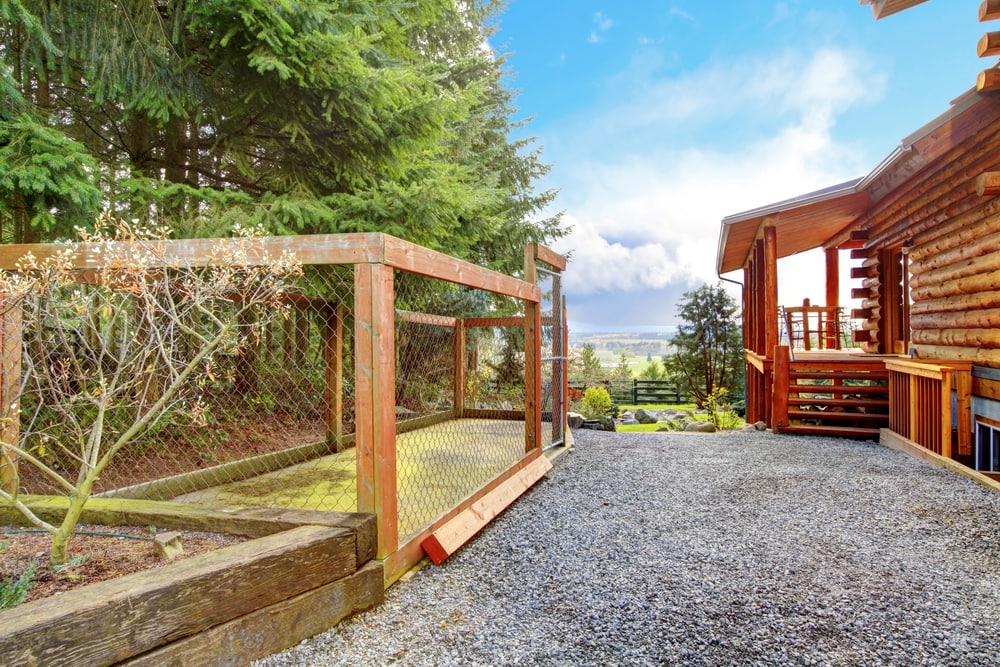
K9 of Mine is reader-supported, which means we may earn a small commission through products purchased using links on this page. Here’s how it works.

All dogs – from the most athletic greyhounds to the laziest bulldogs – need the chance to stretch their legs, run around, and get some exercise on a daily basis. In fact, adequate exercise isn’t only important for the physical health of dogs, it’s important for their mental and emotional well-being too.
However, in the real world, many owners struggle to accommodate this need. Fencing in a backyard is often prohibitively expensive, and daily trips to the dog park aren’t realistic for many owners.
But fortunately, there is a solution: You can build your pet a dog run, which will give your dog a safe place to zoom around to his heart’s content. We’ll explain more about dog runs, provide a few design tips, and share a few specific DIY plans below.
The term “dog run” means different things to different people, and people apply the term to several different types of areas and structures.
There doesn’t appear to be an official definition for the term, and your dog doesn’t care what you call it, so we’ll just use “dog run” to describe any type of outdoor structure or area that gives your dog space to run around.
But it is important to note that all dog runs have one very important characteristic in common – they don’t require you to supervise your dog while in use.
Dog runs are designed to keep your dog in your yard without the use of a standard perimeter fence, preventing your pup from running away or getting into excessive amounts of mischief while he gets his daily exercise.
There may not be a concrete definition for the term dog run, but most fall into one of four basic categories. Before deciding on a specific set of plans, you’ll want to familiarize yourself with each.
When most people use the term dog run, they are probably thinking of a long, narrow fenced area which allows your dog to, well, run back and forth along its length.
While these types of dog runs may not give your dog the freedom to run in any direction he chooses, they provide him a long straightaway that lets him run enough to reach top speed.
Some dog runs feature a square (or nearly square) footprint that provides your dog with a place to hang out and enjoy some fresh air – think of them as outdoor playpens.
While many of these kennels or pens are too small to allow your dog to run very fast, large versions will allow your dog to run around like a proper goofball.
Whether you want to build a long and narrow dog run or a square-shaped play space for your pet, the basic steps are the same.
You’ll also need to install a gate that provides access to the run. Experienced builders can fashion a custom gate relatively easily, but most dog owners will find it simpler to just purchase a pre-fabricated gate at the local hardware store.
You may want to add a suitable ground cover, such as hardwood mulch chips, to the dog run. Dog-safe mulch offers some terrain variety and can alleviate some of the maintenance work needed to keep up with grass. Some owners may also wish to add a roof or windshield to help protect your pup from the elements.
Some owners use the term dog run to apply to an open space which doesn’t feature a fence at all. Instead, a long piece of rope or chain is used to keep your dog from wandering off.
These are the easiest dog runs to build, but they don’t provide as much safety as some of the other types of dog runs.
An anchored tether is exceedingly easy to set up. You can simply buy a corkscrew-shaped stake, drive it into the ground, and then use a long tether to connect the stake to your dog’s collar or harness.
Just be sure to put the tether in a wide-open space which doesn’t present any hazards or obstacles to your dog (you don’t want your dog to wrap the tether around a tree, for example).
If a ground stake isn’t a good fit for your property, dog, or aesthetic tastes, you can insert a large wooden timber into the ground and cement it into place. Then, you’ll need to attach a thick steel ring to one side of the post. This will give you a place to attach the tether.
Some dog runs rely on a sliding (rather than fixed) tether to keep your dog from running away.
These types of dog runs are slightly trickier to build than those featuring anchored tethers, but when properly designed, your dog will be able to enjoy a long straightaway that’ll allow him to hit Mach 1.
A sliding tether is usually easier to set up than a fenced enclosure, but it is more complicated than setting up an anchored tether.
To start, you’ll need to suspend a long cable or rope about 6 to 10 feet above the ground. This rope should extend over the entire length of the dog run area.
You’ll then need to thread a metal ring or short piece of pipe around the suspended line. A tether can then be used to connect your dog to the sliding ring or pipe.
Most dog runs need to be custom built to suit your dog and property. However, that doesn’t mean you have to completely reinvent the wheel – check out the plans listed below and tweak them to suit your situation.
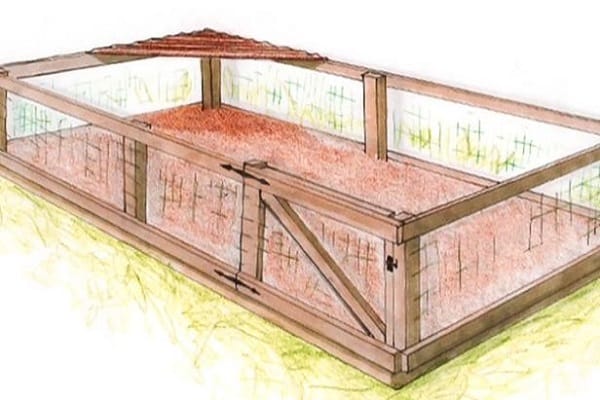
This is a great dog run for small- to medium-sized dogs, but it probably isn’t tall enough to keep large dogs (or impressive leapers) safely contained.
Difficulty Level: Moderate to difficult
Materials Needed:
Tools Needed:
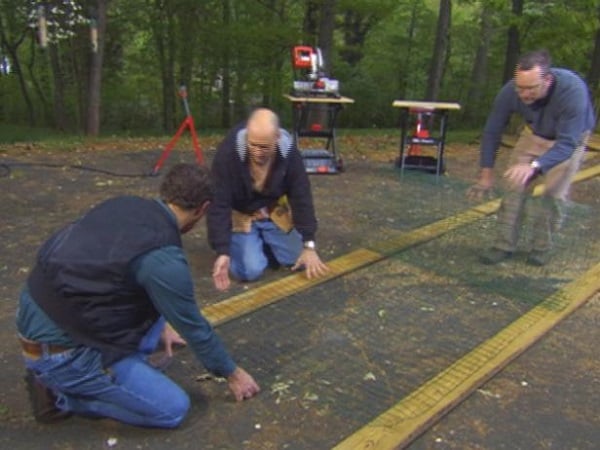
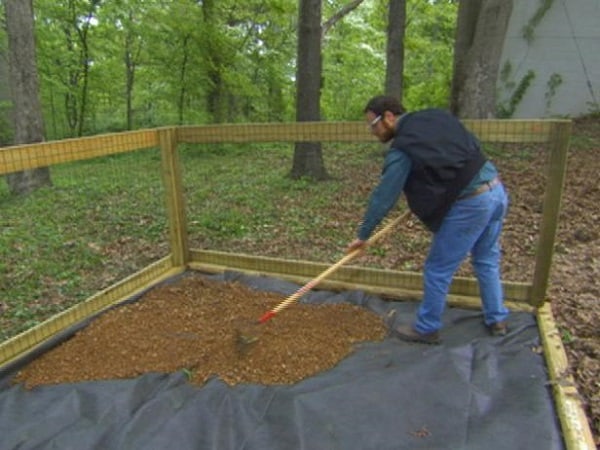
These Cheap and Easy Dog Run plans by Instructables are some of the easiest and most affordable dog run plans we found, and they rely on a number of salvaged items that the authors had laying around.
This doesn’t appear to be a particularly escape-proof dog run, so you’ll want to think twice before using this design for Houdini-like hounds.
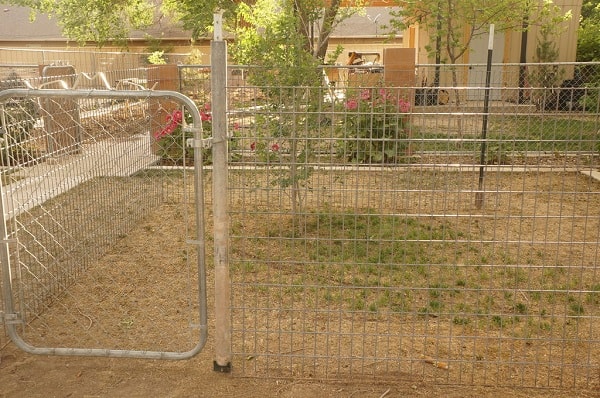
Difficulty Level: Moderate
Materials Needed:
Tools Needed:
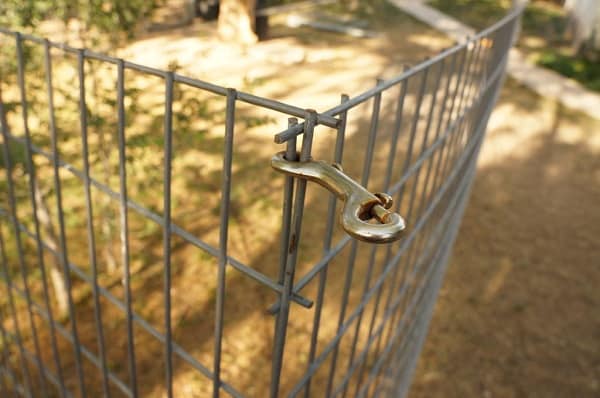
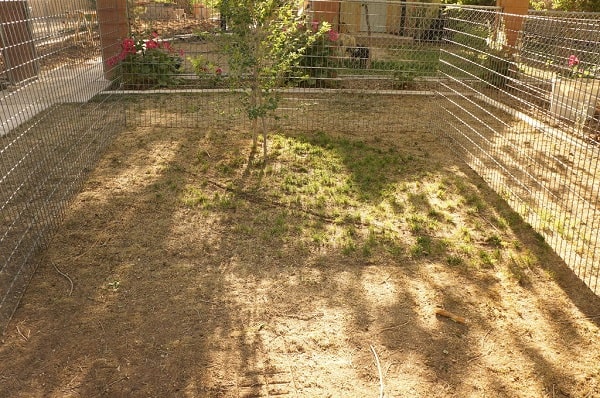
This Chain-Link Dog Run by Family Handyman is probably my favorite set of dog run plans as it includes a variety of cool features, such as buried barriers to prevent your dog from digging his way to freedom and a place that allows you to flush-mount your dog’s house.
However, these things also make the run more challenging to build than many of the others listed here.
Difficulty Level: Difficult
Materials Needed:
Tools Needed:
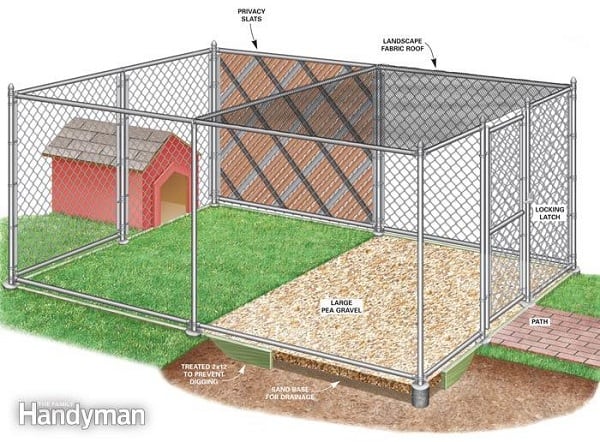
These DIY plans from Jenna & Snickers will help you make a cable run (sliding tether) that will give your dog quite a bit of room to run without the need for a fence.
These are some of the simplest plans for a dog run we found, and they should be very helpful for owners who lack the interest or skill necessary to construct a fenced dog run.
Difficulty Level: Easy
Materials Needed:
Tools Needed:
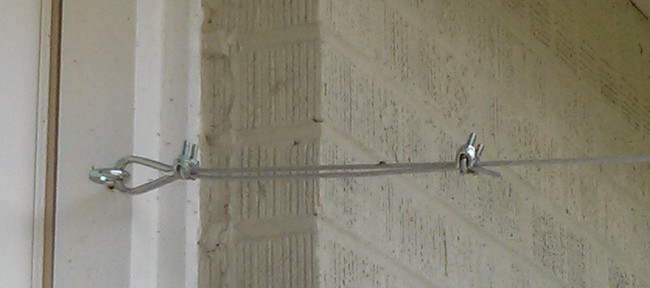

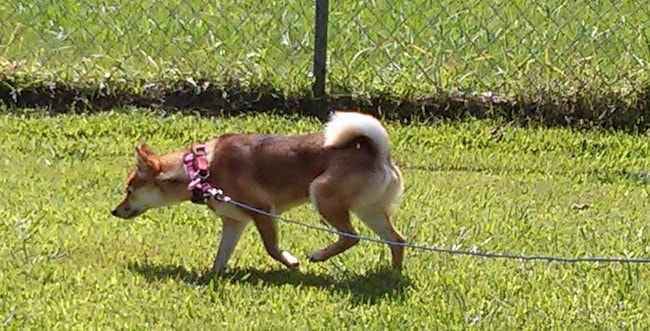
If you just want a simple, easy-to-build dog run, many of the ones previously discussed will fit the bill perfectly.
However, some owners want to go above-and-beyond in an effort to give their dog the most luxurious accommodations possible. And if this sounds like you, this video guide by Youtuber Pete B. will certainly help.
Now, let’s be clear: This is a HUGE project that’ll likely require more time, skill, and funding than the average dog owner is willing or able to invest. But if you want to give your pet a palatial dog run, this video will get you off to a good start.
Alternatively, it is possible to purchase sophisticated outdoor dog kennels like the one demo-ed here. They’ll cost a pretty penny, but they’ll save you a lot of time, effort, and may not even be that much more expensive when you consider supply costs.
Difficulty Level: Difficult
Materials Needed:
You’ll have to watch the video to see all of the materials Pete uses to make his run, but a few of the basic materials needed include:
Tools Needed:

Small dogs are obviously much more vulnerable to these types of dangers than big dogs, but that doesn’t mean big dogs are immune to these threats. A group of canines could gang up on your pet, and nefarious people may harm your pooch in a number of ways – no matter how big and scary he is.
There’s not much you can do to protect tethered dogs from these kinds of threats, so just be sure to carefully consider the number of feral animals, wild critters, and criminals lurking in your area before implementing a tether-style dog run.
Fenced dog runs can be pretty tricky to build – particularly for those without a lot of construction experience. You’ll need to work with heavy materials and power tools, and you’ll likely need the help of a friend or two to finish the project.
On the other hand, tethered dog runs are often very simple to install.
Sliding tethers require a tiny bit of DIY know-how, but fixed-anchor tethers require you to do little more than drive the anchor into the ground (or attach it to some other structure) and tie your dog to it.
If you’re interested in the fixed anchor tether option, make sure to check out our article on the best dog tie outs and tie downs to find the most secure options.
Sufficiently motivated dogs can often make quick work of a rope or cord – I once had a dog chew through her seat-belt leash in the time it took me to drive down my driveway!
So, it is important to consider the likelihood that your dog will try to chew through the tether when deciding on a material to use.
If you have a dog who is inclined to chew on things, just be sure to use a steel cable or chain instead of a rope.
Unless you build a roof of some type over a fenced dog run, you’ll need to take steps to make sure your dog can’t climb or jump over the fence.
Jumpers can usually be thwarted by simply using a fence that is too tall for your dog to clear – this likely means making the fence at least 6- to 8-feet high (and some dogs may even be able to clear these heights).
Climbers can be more challenging to contain. You can add smooth panels to the inside of the enclosure to help prevent them from getting a grip, or you can use “coyote rollers,” which will prevent most dogs from escaping.